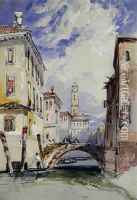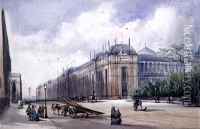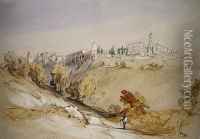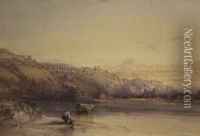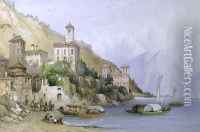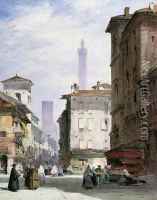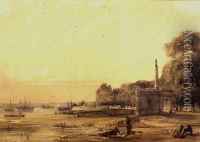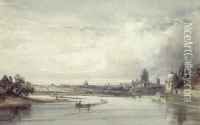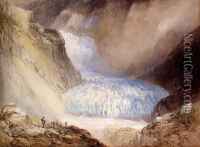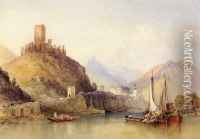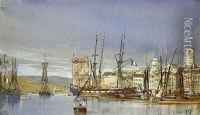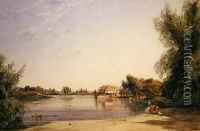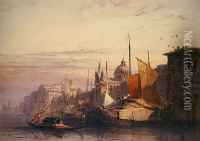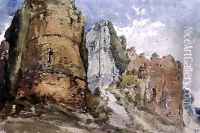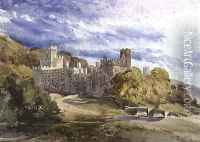William Callow Paintings
William Callow was an English landscape painter, watercolourist, and engraver, known for his works that capture the essence of the British and European countryside. Born on June 28, 1812, in Greenwich, London, Callow showed an early talent for art, which led him to pursue a career in the field from a young age.
Callow was apprenticed to the engraver C. T. Thompson in London when he was just 11 years old. During his apprenticeship, he learned the fundamentals of drawing and watercolour painting. By the age of 16, Callow had already started to exhibit his works at the Royal Academy and the Society of British Artists.
In 1829, Callow traveled to Paris to study under the influential French landscape painter, Theodore Caruelle d'Aligny. This experience not only honed his skills but also exposed him to the French style of landscape painting, which would have a lasting impact on his work.
Throughout the 1830s and 1840s, Callow traveled extensively across Europe, particularly in France, Italy, and Germany, capturing the diverse landscapes and urban scenes. His travels and his skill in watercolour painting helped to establish him as a prominent figure in the English school of watercolour painting.
Callow's work is characterized by its attention to detail, vibrant use of colour, and the ability to convey the atmosphere of a scene. He became well known for his picturesque views and was recognized by both critics and the public for his contribution to the art of landscape painting.
In 1855, Callow was elected an associate of the Old Watercolour Society, and he became a full member in 1859. Throughout his career, he continued to exhibit his works in various prominent venues, including the Royal Academy.
William Callow remained active as an artist until well into his old age. He continued to travel and paint, capturing the beauty of the landscapes he visited. Callow's legacy is that of a master watercolourist whose works provided a romantic and detailed portrayal of 19th-century Europe. He passed away on February 20, 1908, leaving behind a body of work that continues to be appreciated for its artistic merit and historical value.
